Non-ionic surfactants
Non-ionic surfactant refers to a kind of surfactant with its molecule not undergoing ionization when being dissolved in water. Before World War II, it was first developed by the IG Company (German) with the trade names being Igepol, Leonil and Emulphor. According to their different hydrophilic groups, it can be divided into polyoxyethylene and polyols two categories.
1 Polyoxyethylene: its formula is RO (CH2CH2O)nH. It is manufactured through the reaction between the active hydrogen-containing compound and the ethylene oxide. Commonly used active hydrogen-containing compound in industry include fatty alcohols, alkylphenols, fatty acids, fatty amines, fatty amides, polyhydric alcohols, fatty acid esters, oil lipid, sorbitol and so on. The largest category of commercially available nonionic surfactants is the ethylene oxide adducts of the fatty alcohol and alkylphenol. Polyoxyethylene type surfactant is mostly soluble in water with very wide range of applications and used as cleaning agents, penetrating agents, leveling agents and emulsifiers in many industrial sectors.
2 Polyhydric alcohol type: it is the amide type or esters type compound manufactured from the reaction between multi-hydroxyl containing compounds with fatty acid. Polyol-type nonionic surfactant has high safety, small irritant effect on the skin, so in addition to be used as the oil agent and softener of the fiber, it can also be used as emulsifiers and dispersing agents in the food industry, the pharmaceutical industry and the cosmetics industry.
Non-ionic surfactant has a high stability and is not easily affected by the acid-base or strong electrolytes. Moreover, it also has good compatibility with anionic, cationic surfactants or amphoteric surfactants and can be used in formulation.
The nonionic surfactant are not in the ionic state in the solution, thereby having high stability and being less susceptible to the effect of strong electrolyte inorganic salts as well as acid and alkalis; it has excellent compatibility with other types of surfactants and have excellent solubility (which vary depending on different structures) in both water and organic solvents.
This kind of surfactants, although not ionized in water, but contain both hydrophilic groups (e.g. oxyethylene-CH2CH2O-, ether group -O-, hydroxyl group -OH or -CONH2 amide group, etc.) and lipophilic group (e.g., hydrocarbon-R). The hydrophilic groups and lipophilic groups may respectively interact with the inorganic filler and polymer matrix material to strengthen the links between them two, thus improving the compatibility between the two and playing an effect on plasticizing and lubrication of the flexible carbon between two polar groups. Meanwhile, it can endow the system with flexibility and mobility, reducing the viscosity of the system, and thereby improving the processing properties of the composites.
The aqueous solution of nonionic surfactants has poor foaming capability with the foam being not stable as well. This is due to that each molecule of the non-ionic surfactant has relatively large surface area and the interface being in uncharged foam. Polyoxyethylene has long chain and uniform molecular weight distribution. The lipophilic group has long chain and also contains branched chain. The presence of the polyoxyethylene -polyoxypropylene copolymer both has a great impact on the foaming of the non-ionic surfactants. Owing to the presence of the polar portion and non-polar portions existing in their molecular structure, they have surface activity. Such kind of active agents can be divided into the ester type (e.g. polyoxyethylene fatty acid esters, sorbitan fatty acid esters anhydrides), ether type (e.g., polyoxyethylene alkyl ether, polyoxyethylene alkyl phenol ether), amine type (such as polyoxyethylene fatty amine), amide type (such as polyoxyethylene alkyl amide) and mixing type (such as sorbitol anhydride fatty acid esters, polyoxyethylene ether). In the field of oiling, it is mainly used in foaming, emulsifying, anti-wax, anti-corrosion, retarder, production increase of oil well, intensified injection of injection wells as well as improving oil recovery and so on.
- Structure:
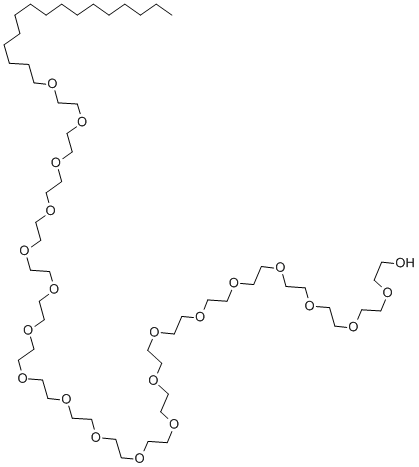
- Chemical Name:Polyethylene Glycol Monocetyl Ether
- CAS:9004-95-9
- MF:C56H114O21
- Structure:

- Chemical Name:POLYETHYLENE GLYCOL MONOOLEYL ETHER
- CAS:9004-98-2
- MF:C38H76O11
- Structure:

- Chemical Name:TRILAURIN
- CAS:538-24-9
- MF:C39H74O6
- Structure:
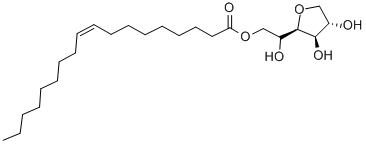
- Chemical Name:Span 80
- CAS:1338-43-8
- MF:C24H44O6
- Structure:

- Chemical Name:Glycerol tristearate
- CAS:555-43-1
- MF:C57H110O6
- Structure:

- Chemical Name:Sorbitan monopalmitate
- CAS:26266-57-9
- MF:C22H42O6
- Structure:

- Chemical Name:TRIOLEIN
- CAS:122-32-7
- MF:C57H104O6
- Structure:

- Chemical Name:Span 20
- CAS:1338-39-2
- MF:C18H34O6
- Structure:

- Chemical Name:Hydroxypropyl methyl cellulose
- CAS:9004-65-3
- MF:C3H7O*
- Chemical Name:Tween 60
- CAS:9005-67-8
- MF:C64H126O26
- Structure:
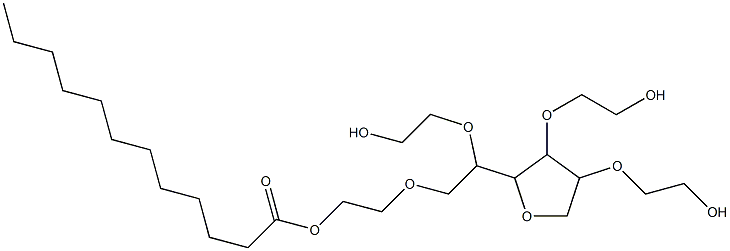
- Chemical Name:Polysorbate 20
- CAS:9005-64-5
- MF:C26H50O10
- Structure:

- Chemical Name:Polyoxyethylene stearate
- CAS:9004-99-3
- MF:C34H70O9
- Structure:
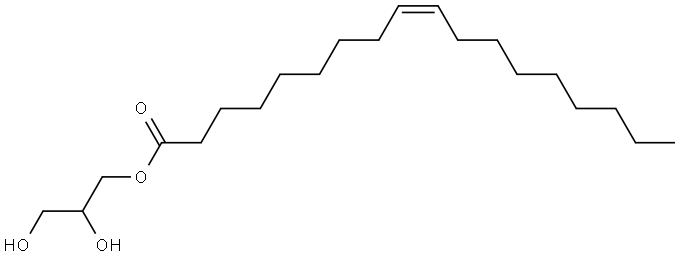
- Chemical Name:Glyceryl Monooleate
- CAS:111-03-5
- MF:C21H40O4
- Structure:

- Chemical Name:Span 60
- CAS:1338-41-6
- MF:C24H46O6
- Structure:

- Chemical Name:Docosanamide
- CAS:3061-75-4
- MF:C22H45NO
- Structure:
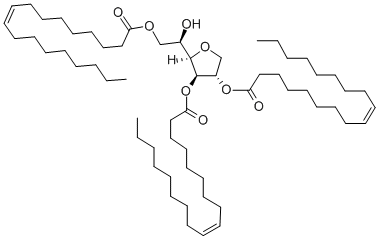
- Chemical Name:SORBITAN TRIOLEATE
- CAS:26266-58-0
- MF:C60H108O8
- Structure:

- Chemical Name:Polyoxyethylene lauryl ether
- CAS:9002-92-0
- MF:C58H118O24
- Chemical Name:Hydroxyethyl Cellulose
- CAS:9004-62-0
- MF:C29H52O21
- Chemical Name:Emulsifier FM
- CAS:
- MF:C24H49NO4
- Chemical Name:Propyleneglycol alginate
- CAS:9005-37-2
- MF:(C9H14O70n
- Structure:

- Chemical Name:GLYCEROL MONOHYDROXYSTEARATE
- CAS:1323-42-8
- MF:C21H42O5
- Chemical Name:Fatty acids, lanolin, isopropyl esters
- CAS:63393-93-1
- MF:
- Chemical Name:Emulsifier LAE-9
- CAS:
- MF:RCOO(CH2CH2O)9H
- Structure:
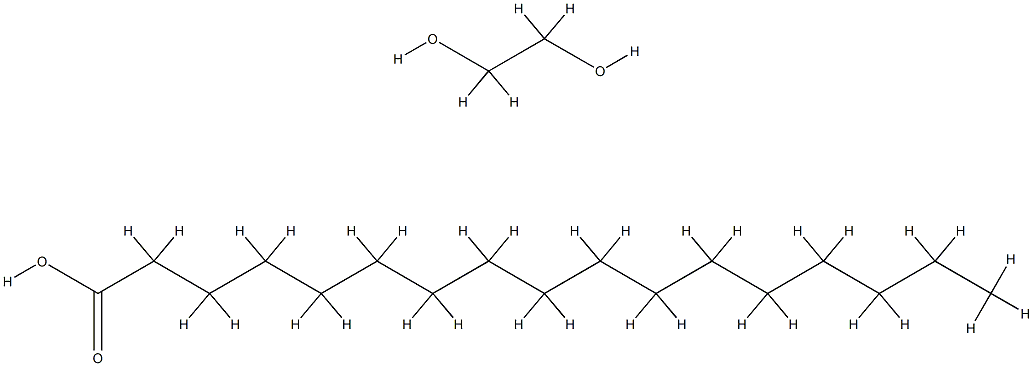
- Chemical Name:Poly(ethylene glycol) distearate
- CAS:9005-08-7
- MF:C19H40O4
- Structure:

- Chemical Name:MYRISTYL MYRISTATE
- CAS:3234-85-3
- MF:C28H56O2
- Structure:
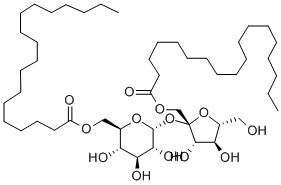
- Chemical Name:SUCROSE DISTEARATE
- CAS:27195-16-0
- MF:C48H90O13
- Structure:
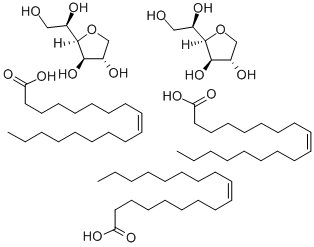
- Chemical Name:Sorbitan sesquioleate
- CAS:8007-43-0
- MF:C66H126O16
- Structure:
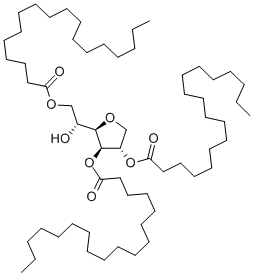
- Chemical Name:SORBITAN TRISTEARATE
- CAS:26658-19-5
- MF:C60H114O8
- Chemical Name:Fatty alcohol polyoxyethylene ether N=3
- CAS:
- MF:C12H25O(CH2CH2O)3H
- Structure:
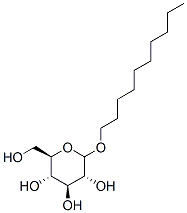
- Chemical Name:Decyl glucoside
- CAS:68515-73-1
- MF:C16H32O6
- Chemical Name:alkyl polyglucoside
- CAS:
- MF:
- Structure:

- Chemical Name:MONOCAPRYLIN
- CAS:26402-26-6
- MF:C11H22O4
- Structure:
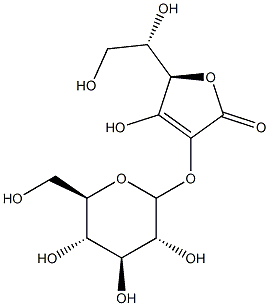
- Chemical Name:polysorbate 40
- CAS:9005-66-7
- MF:C12H18O11
- Chemical Name:alkyl phenyl polyoxyethylene ether
- CAS:
- MF:C35~36H64~66O10
- Structure:

- Chemical Name:Poly(oxy-1,2-ethanediyl), alpha-isodecyl-omega-hydroxy-
- CAS:61827-42-7
- MF:C12H26O2
- Structure:
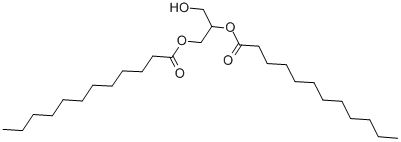
- Chemical Name:DILAURIN
- CAS:27638-00-2
- MF:C27H52O5
- Structure:

- Chemical Name:MONOMYRISTIN
- CAS:27214-38-6
- MF:C17H34O4
- Structure:

- Chemical Name:DECYL OLEATE
- CAS:3687-46-5
- MF:C28H54O2
- Chemical Name:Tween 80
- CAS:9005-65-6
- MF:C24H44O6
- Chemical Name:TRIDECETH-4
- CAS:69011-36-5
- MF:
- Structure:

- Chemical Name:Tween 85
- CAS:9005-70-3
- MF:CH4
- Structure:

- Chemical Name:NONAETHYLENE GLYCOL MONODODECYL ETHER
- CAS:3055-99-0
- MF:C30H62O10
- Chemical Name:FATTY ACID METHYL ESTER MIX C8-C22
- CAS:
- MF:
- Chemical Name:Emulsifier EL-40
- CAS:
- MF:
- Chemical Name:Trimethylolpropane t
- CAS:
- MF:
- Chemical Name:SUCROSE COCOATE
- CAS:91031-88-8
- MF:
- Structure:

- Chemical Name:CETYL LACTATE
- CAS:35274-05-6
- MF:C19H38O3
- Structure:

- Chemical Name:Polyethylene glycol octadecyl ether
- CAS:9005-00-9
- MF:C20H42O2
- Structure:
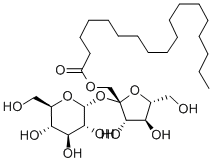
- Chemical Name:Sucrose stearate
- CAS:25168-73-4
- MF:C30H56O12
- Structure:
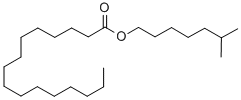
- Chemical Name:Isooctyl palmitate
- CAS:1341-38-4
- MF:C24H48O2
- Structure:

- Chemical Name:GENAPOL(R) X-080
- CAS:9043-30-5
- MF:HO(CH2CH2O)n(CH2)mH
- Structure:
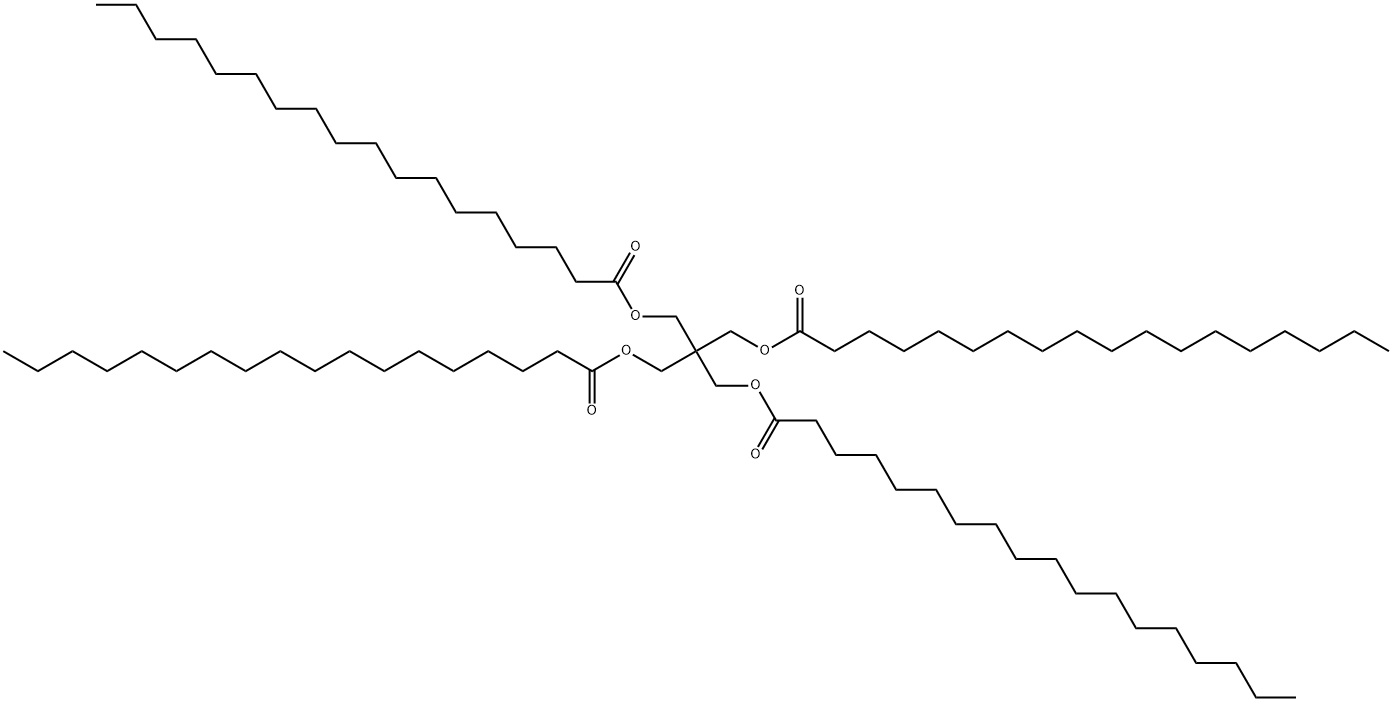
- Chemical Name:Pentaerythrityl tetrastearate
- CAS:115-83-3
- MF:C77H148O8
- Structure:

- Chemical Name:Isopropyl myristate
- CAS:110-27-0
- MF:C17H34O2
- Structure:

- Chemical Name:MONOLAURIN
- CAS:142-18-7
- MF:C15H30O4
- Chemical Name:Empilan CIS
- CAS:
- MF:
- Chemical Name:octyl phenyl polyoxyethylene (30) ether
- CAS:
- MF:C74H142O31
- Structure:

- Chemical Name:ACETYLATED SUCROSE DISTEARATE
- CAS:121684-92-2
- MF:
- Chemical Name:dibenzyl biphenyl polyoxyethylene ether
- CAS:
- MF:C58H86O17
- Chemical Name:additive AC1210
- CAS:
- MF:C32H67O10
- Chemical Name:Emulsifier OP-40
- CAS:
- MF:
- Chemical Name:PENTAERYTHRITOL TETRARICINOLEATE 10G [R]
- CAS:
- MF:
- Structure:
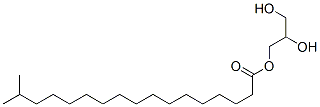
- Chemical Name:Isooctadecanoic acid, ester with 1,2,3-propanetriol
- CAS:61332-02-3
- MF:C21H42O4
- Structure:

- Chemical Name:2-[bis(2-hydroxyethyl)amino]ethyl stearate
- CAS:10248-74-5
- MF:C24H49NO4
- Chemical Name:pesticide emulsifier 700^<#^>
- CAS:
- MF:C69H124O22
- Chemical Name:Alkyl polyglucoside
- CAS:
- MF:
- Chemical Name:C^{8~9^} alkyl phenyl polyoxyethylene (15) ether
- CAS:
- MF:C44~45H82~84O16
- Structure:

- Chemical Name:glycerine monostearate
- CAS:
- MF:C21H42O4
- Chemical Name:castor oil polyoxyethylene (90) ether
- CAS:
- MF:
- Chemical Name:C^{12~18^} fatty alcohol polyoxyethylene (35) ether
- CAS:
- MF:C82~88H166~178O36
- Chemical Name:Emulsifier EL-60
- CAS:
- MF:
- Chemical Name:OleylOleate
- CAS:
- MF:C36H68O2
- Chemical Name:coconut oil alcohol acylamide
- CAS:
- MF:
- Chemical Name:castor oil poloxyethylene (30) ether
- CAS:
- MF:
- Structure:
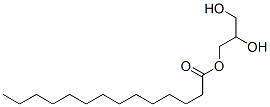
- Chemical Name:MONOMYRISTIN
- CAS:75685-84-6
- MF:C17H34O4
- Chemical Name:C^{8~9^} alkyl phenyl polyoxyethylene (8) ether
- CAS:
- MF:C30~31H54~56O9
- Chemical Name:Emulsifier OP-4
- CAS:
- MF:RC6H4O(CH2CH2O)4H
- Chemical Name:octyl phenyl polyoxyethylene (3) ether
- CAS:
- MF:
- Structure:

- Chemical Name:ethylene glycol monostearate
- CAS:
- MF:C20H40O3
- Structure:

- Chemical Name:HEXAETHYLENE GLYCOL MONOOCTYL ETHER
- CAS:4440-54-4
- MF:C20H42O7
- Structure:

- Chemical Name:glycerine monolaurate
- CAS:
- MF:C15H30O4
- Structure:

- Chemical Name:POE (2) OLEYL AMINE
- CAS:13127-82-7
- MF:C22H45NO2
- Chemical Name:Glycerides, coco mono-
- CAS:61789-05-7
- MF:
- Chemical Name:polyoxyethylene (10) castor oil ether
- CAS:
- MF:
- Chemical Name:Fatty alcohol polyoxyethylene ether O-10
- CAS:
- MF:C32~38H66~78O11
- Chemical Name:Glycerides, lard mono-, acetates
- CAS:68990-55-6
- MF:
- Structure:

- Chemical Name:1-Glyceryl caprate
- CAS:11139-88-1
- MF:C13H26O4
- Chemical Name:Peregal O-25
- CAS:
- MF:C62~68H126~138O26
- Chemical Name:Deemulsifier SP-169
- CAS:
- MF:
- Chemical Name:Emulsifier (S-185)
- CAS:
- MF:RO(CH2CH2O)nH
- Chemical Name:dodecyl polyglucoside
- CAS:
- MF:
- Chemical Name:Additive AC1815
- CAS:
- MF:C48H99NO15
- Chemical Name:nonyl phenyl polyoxyethylene (9) ether
- CAS:
- MF:C33H60O10